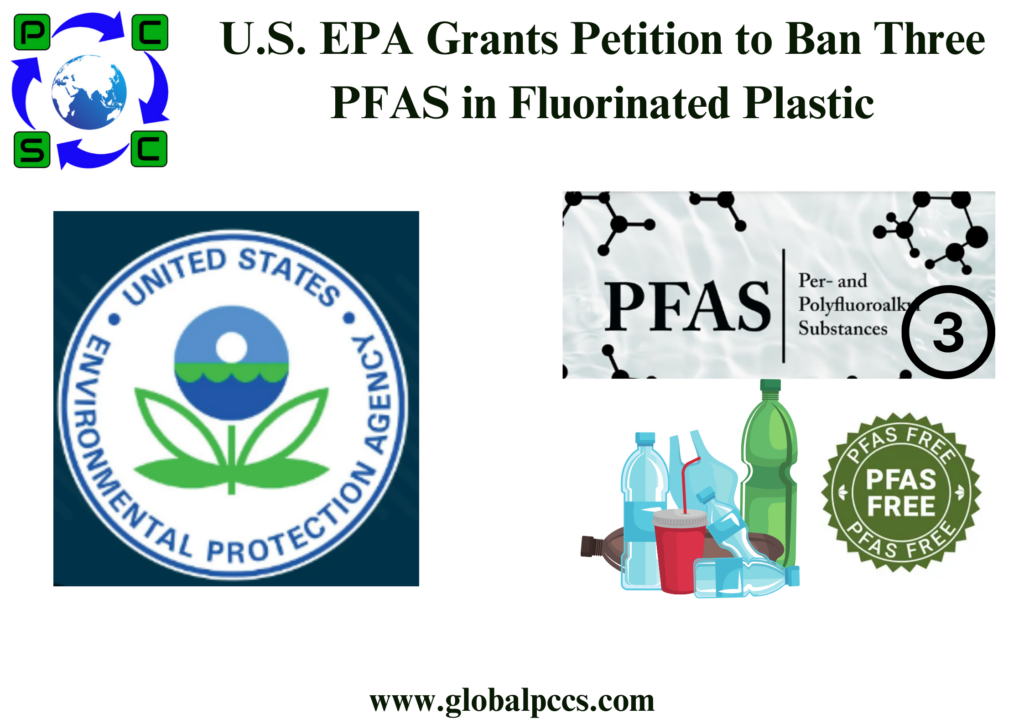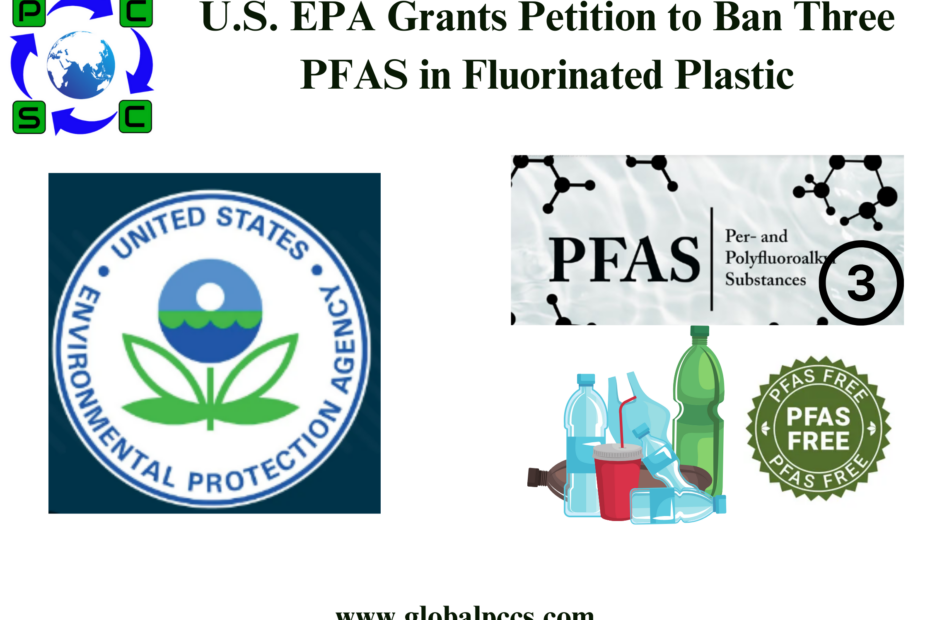 EPA grants a petition to regulate the manufacturing, processing, use, and disposal of PFOA, PFNA, PFDA formed during the fluorination of plastic containers under the TSCA Section 6 and will commence an appropriate proceeding to gather further information on fluorinated plastic.
EPA grants a petition to regulate the manufacturing, processing, use, and disposal of PFOA, PFNA, PFDA formed during the fluorination of plastic containers under the TSCA Section 6 and will commence an appropriate proceeding to gather further information on fluorinated plastic.
Background
PFAS formed during the fluorination process leach from fluorinated plastic containers into the products stored in them. As a result, exposure to toxic PFOA, PFNA, PFDA and other PFAS can occur at all stages of the life cycles of these containers, including their manufacturing, processing, distribution, use, and disposal.
In September 2022, the EPA was alerted to PFAS contamination in a mosquitocide, which was later determined that the PFAS found came from the fluorinated high-density polyethylene (HDPE) plastic containers supplied by Inhance Technologies LLC. These containers produced PFAS like PFOA, PFNA, and PFDA, which could migrate into stored liquids.
Notably, PFOA, PFNA, and PFDA are subject to the 2020 long-chain PFAS Significant New Use Rule (SNUR), mandating prior notification to the EPA before chemical substances and mixtures are used in new ways.
In a subsequent turn of events, the EPA’s Office of Enforcement and Compliance Assurance issued a Notice of Violation to Enhance in March 2022. This was in response to the company manufacturing PFAS without notification to the EPA.
In December 2023, EPA issued orders under section 5 of TSCA directing the company to stop production of the PFAS. The orders were challenged by Inhance and later vacated in March 2024 by the U.S. Court of Appeals for the Fifth Circuit.
On July 10, 2024, The U.S. Environmental Protection Agency (EPA) granted a petition submitted by a coalition of environmental organizations dated April 11, 2024.
This petition, spearheaded by advocates such as the Center for Environmental Health, Public Employees for Environmental Responsibility, urged EPA to take actions under Section 6 of the Toxic Substances Control Act (TSCA) in prohibiting the manufacturing, processing, use, distribution in commerce, and disposal of three per- and polyfluoroalkyl substances (PFAS) perfluorooctanoic acid (PFOA), perfluorononanoic acid (PFNA), and perfluorodecanoic acid (PFDA) formed during the fluorination of plastic containers.
This decision, communicated through a detailed letter to the petitioners, signifies the EPA’s commitment to addressing the environmental and health hazards posed by PFAS compounds. While granting the petition, the EPA clarified that this action is not a final agency decision but rather a step towards initiating a proceeding under TSCA Section 6.
Expected EPA Actions
Earlier this year, the EPA took proactive steps by including PFOA and PFNA in a national drinking water standard for PFAS and designating PFOA as a hazardous substance under the Comprehensive Environmental Response, Compensation, and Liability Act (CERCLA).
The Agency’s forthcoming actions will focus on gathering crucial data on the formation of PFAS during fluorination of plastic containers, including the following information:
- The number, location, and uses of fluorinated containers in the United States;
- Alternatives to the fluorination process that generates PFOA, PFNA, and PFDA;
- Measures to address risk from PFOA, PFNA, and PFDA formed during the fluorination of plastic containers
Other EPA Actions
In September 2021, EPA released an internally validated method for detecting 28 PFAS compounds in oily matrices.
In March 2022, EPA provided information to manufacturers (including importers), processors, distributors, users, and those that dispose of fluorinated HDPE containers and similar plastics (i.e., fluorinated polyolefins) about the potential for PFAS to form and migrate from these items.
In February 2024, EPA released a new method to detect 32 PFAS directly from the walls of containers made from HDPE.
Conclusion
EPA has affirmed that it cannot control potential exposures to these three PFAS through means other than a prohibition on the manufacture of these substances.
As the Agency gears up to initiate proceedings in response to the granted petition, stakeholders and the public await further details on how these new regulations will shape the landscape of PFAS management in the United States and prepare in advance to eliminate the PFAS formation in the fluorination process.








 Authorised IMDS & CDX Training & Consulting partner for
Authorised IMDS & CDX Training & Consulting partner for





